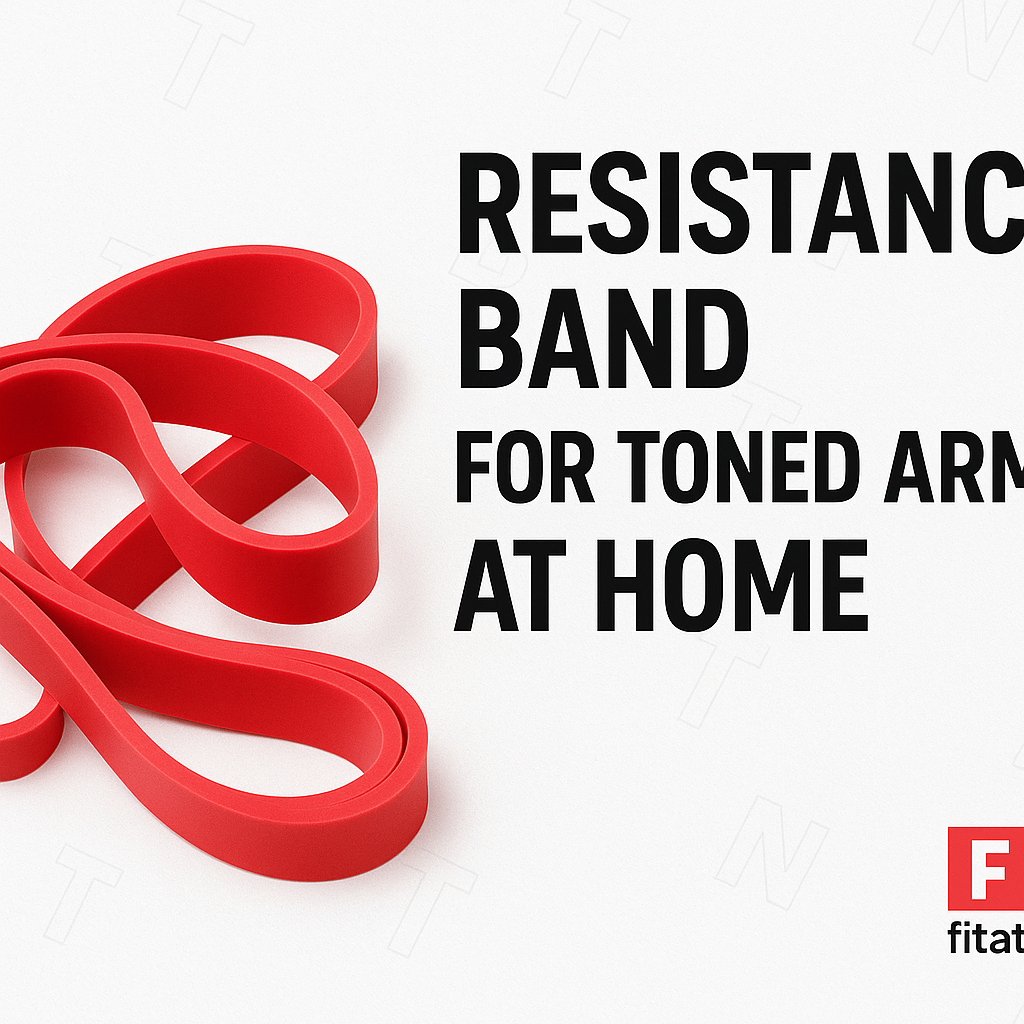Introduction to Resistance Band Training 💪
Resistance band training has taken the fitness world by storm — and for good reason! 🎯 These simple yet powerful tools are perfect for building strength, toning muscles, and boosting endurance — all without the need for heavy weights or expensive gym memberships. Whether you’re a complete beginner or a seasoned athlete, resistance bands offer a flexible, low-impact workout option that fits into any lifestyle.
Unlike bulky gym machines, resistance bands are lightweight, portable, and incredibly versatile. You can target virtually every muscle group — from arms and shoulders to glutes and core — using just one or two bands. They’re great for toning your arms, improving your posture, and building functional strength that translates into daily activities like lifting, reaching, or carrying. 🙌
But the benefits don’t stop there. Resistance bands are also budget-friendly 💵 and ideal for small spaces, making them the ultimate solution for at-home workouts. Whether you live in an apartment or travel frequently, you can easily take your bands with you and stay on top of your fitness routine.
As we dive deeper into resistance band exercises for arm toning, you’ll learn how to use them effectively, pick the right band for your goals, and perform targeted movements to shape strong, sculpted arms — all from the comfort of your own home. 🏠💥
Choosing the Right Resistance Band 🏷️
Before you jump into your workout, it’s important to choose the right resistance band to suit your needs. Resistance bands come in several types:
- Loop bands: Great for lower-body workouts like squats and glute bridges.
- Tube bands with handles: Perfect for upper-body exercises like bicep curls and rows.
- Fabric bands: Durable, non-slip, and often used for legs and hips.
Bands are also color-coded by resistance level — light, medium, heavy, and extra-heavy. 🔴🟡🔵🟢 Beginners should start light and progress gradually. A simple way to test your band is to perform a bicep curl — the right band should challenge your muscles while allowing you to maintain proper form.
Tip: Combine different bands for extra variety and resistance. Just remember to check for wear and tear before each session and always anchor your band securely for safe use. ✅
Essential Warm-Up for Arm Workouts 🔥
Warming up is non-negotiable! A quick, focused warm-up reduces injury risk and improves performance. Here’s a 5-minute warm-up routine you can do at home:
- 🔄 Arm Circles: 30 seconds forward, 30 seconds backward.
- 🔃 Shoulder Rolls: 30 seconds each direction.
- 💥 Bicep Pulses: 20 reps.
- 🧠 Overhead Tricep Extensions (Bodyweight): 15 reps.
These movements increase blood flow to the arms and get your joints ready for resistance training. 🚀
Exercise 1: Bicep Curls with Resistance Band 💪
Target your biceps with this classic move:
- Stand on the band with feet shoulder-width apart.
- Grab the handles (or ends) with palms facing up.
- Keep elbows tucked in and curl your hands toward your shoulders.
- Lower slowly and repeat.
✅ Tip: Keep your back straight and core engaged. Start with 2–3 sets of 10–12 reps. As you get stronger, increase resistance or reps.
Exercise 2: Tricep Extensions with Resistance Band 💥
Tone the back of your arms with this move:
- Anchor the band above shoulder height (e.g., in a door).
- Grab the handles and keep elbows close to your sides.
- Extend arms downward, straightening fully.
- Pause, then return slowly.
Do 2–3 sets of 12–15 reps. 💯 This one is great for improving arm definition and functional pushing strength.
Exercise 3: Lateral Raises with Resistance Band ✈️
Build your shoulders and side delts:
- Stand on the band, feet hip-width apart.
- Hold the ends at your sides, palms facing in.
- Raise arms out to shoulder level.
- Lower with control.
Start with 10–12 reps. Adjust band thickness or stance for difficulty. 🧠 Focus on form — no jerking or swinging!
Exercise 4: Front Raises with Resistance Band 🎯
Target your front delts:
- Stand on the band, feet shoulder-width apart.
- Hold both ends in front of your thighs, palms down.
- Raise arms to shoulder height.
- Lower with control.
Aim for 2–3 sets of 10–15 reps. ✅ Alternate arms or add pauses for extra challenge.
Exercise 5: Push-Ups with Resistance Band 🧱
Take your push-ups to the next level:
- Wrap the band around your upper back.
- Hold the ends under your palms.
- Get into a plank position.
- Lower your chest, then push back up.
🔥 The added resistance activates your chest, arms, and shoulders more intensely. Beginners can modify by dropping to knees.
Final Tips for Toned Arms & Lasting Results 🏁
Achieving toned, sculpted arms takes consistency, smart programming, and good recovery habits:
✅ Stick to a routine: Train 2–3x per week. ✅ Track your progress: Use a fitness journal or app. ✅ Eat smart: Fuel with protein, veggies, and whole grains. ✅ Stay hydrated: Water supports performance and recovery. ✅ Stretch and recover: Don’t skip cooldowns!
Need motivation? Join an online fitness group or follow trainers who specialize in home workouts. Accountability can make all the difference! 🙌
With resistance bands, you don’t need a gym to get strong. Just a bit of space, a solid plan, and the determination to show up. Your arms (and confidence) will thank you! 💪🎉
“As an Amazon Associate I earn from qualifying purchases.”
This workout nails the brief for clarity and simplicity. The instructor speaks directly, cues form consistently (like elbow placement and control), and encourages a steady tempo without rushing—creating a beginner-friendly yet effective tone.
For anyone seeking toned arms in a short routine, this video delivers exactly that—no fluff, no intimidation. It’s especially valuable for viewers who are time-tight or prefer low-impact workouts.

